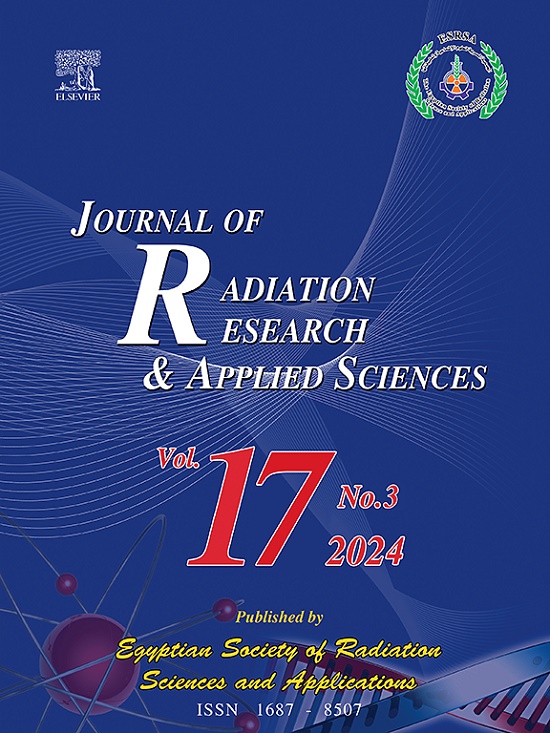Altered brain functional connectivity in paroxysmal atrial fibrillation: Insights from resting-state fMRI
IF 1.7
4区 综合性期刊
Q2 MULTIDISCIPLINARY SCIENCES
Journal of Radiation Research and Applied Sciences
Pub Date : 2025-05-10
DOI:10.1016/j.jrras.2025.101603
引用次数: 0
Abstract
Background
Paroxysmal atrial fibrillation (PAF), an episodic form of irregular heart rhythm, is associated with changes in brain connectivity, particularly in regions involved in auto-nomic regulation. This study aimed to examine whole-brain functional connectivity (FC) in PAF patients compared to healthy controls (HCs) using resting-state functional MRI (rs-fMRI).
Methods
Twenty PAF patients and 19 age and gender matched HCs underwent rs-fMRI scans. The whole-brain voxel-wise FC analysis was conducted based on regions of interest defined by the Automated Anatomical Labeling 3 (AAL3) atlas. Seed regions showing significant group differences were refined into subregions to further define the altered function network.
Results
PAF patients exhibited altered FC in several brain regions, including the left posterior orbitofrontal cortex, the left hippocampus, multiple hypothalamic nuclei, left insula, left inferior frontal gyrus opercular part, left fusiform, right globus pallidus and left ventral tegmental area. Moreover, altered FC was observed in the left ventral anterior insula and the left anterior hippocampus with enhanced connectivity in limbic regions linked to autonomic dysregulation.
Conclusions
These findings reveal that PAF is associated with significant alterations in the neural networks that regulate emotional processing, sensory integration, and autonomic control.
阵发性心房颤动的脑功能连通性改变:静息状态fMRI的见解
背景:阵发性心房颤动(PAF)是一种不规则心律的发作性形式,与大脑连通性的变化有关,特别是在涉及自主调节的区域。本研究旨在利用静息状态功能MRI (rs-fMRI)检测PAF患者与健康对照组(hc)的全脑功能连通性(FC)。方法对20例PAF患者和19例年龄和性别匹配的hc进行rs-fMRI扫描。全脑体素FC分析基于自动解剖标记3 (AAL3)图谱定义的感兴趣区域进行。显示显著群体差异的种子区域被细化为子区域,以进一步定义改变的功能网络。结果spaf患者在左侧后眶额皮质、左侧海马、多个下丘脑核、左侧岛区、左侧额下回眼部、左侧梭状回、右侧白球和左侧腹侧被盖区等多个脑区均出现FC改变。此外,在左腹侧前岛和左前海马中观察到FC的改变,与自主神经失调相关的边缘区域的连通性增强。这些发现表明,PAF与调节情绪处理、感觉整合和自主控制的神经网络的显著改变有关。
本文章由计算机程序翻译,如有差异,请以英文原文为准。
求助全文
约1分钟内获得全文
求助全文
来源期刊

Journal of Radiation Research and Applied Sciences
MULTIDISCIPLINARY SCIENCES-
自引率
5.90%
发文量
130
审稿时长
16 weeks
期刊介绍:
Journal of Radiation Research and Applied Sciences provides a high quality medium for the publication of substantial, original and scientific and technological papers on the development and applications of nuclear, radiation and isotopes in biology, medicine, drugs, biochemistry, microbiology, agriculture, entomology, food technology, chemistry, physics, solid states, engineering, environmental and applied sciences.
 求助内容:
求助内容: 应助结果提醒方式:
应助结果提醒方式:


